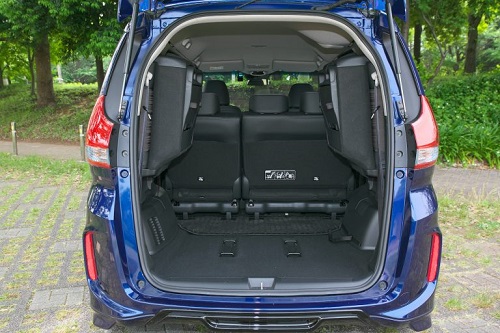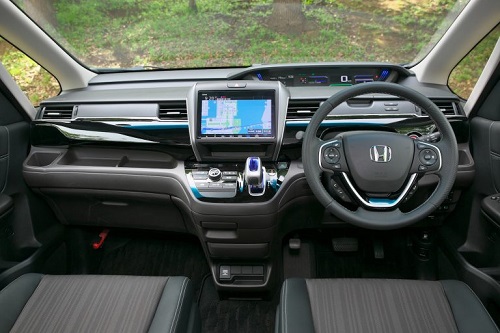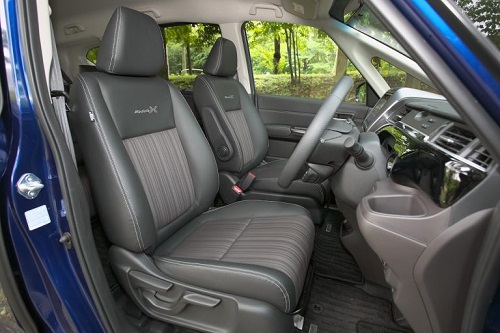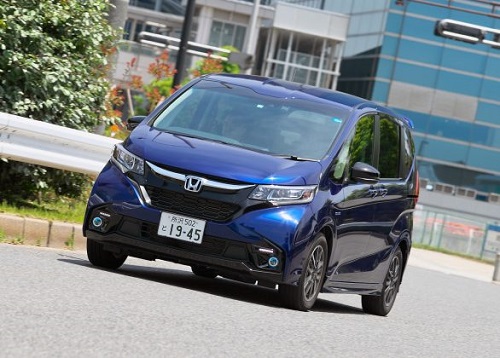Honda Freed is the most compact minivan with 3 rows of seats and sliding doors. It is gaining popularity for its body size that matches the road conditions in Japan and its user-friendly interior space. This time, let’s thoroughly review the second generation Honda Freed and the two-row seat version Freed + (Plus) that appeared in September 2016.
The most compact 3-row seat minivan

Japanese-made minivans are very popular not only in Japan, but also in Asia in recent years. Honda Freed is one of the most compact size models in its abundant lineup. Freed and Toyota Sienta belong to this category, and in July 2018, Freed ranked 11th with 7016 units and Sienta ranked 12th with 6864 units, resulting in fierce sales competition. However, although the Sienta is a single model, the Freed is the sum of the Freed, a minivan with three rows of seats, and the Freed + (plus), a tall wagon with a large luggage space without the third row seats. . In terms of sales volume, the Freed is slightly ahead of the Sienta, but it also has the appeal of being a hybrid vehicle with 4WD. Now, let’s introduce the Honda Freed, a powerful compact minivan.
After a period of trial and error, a fit-based 3-row seat minivan
Honda’s history of compact minivans has its roots in the 2001 Mobilio. In 2004, the Edix, a unique minivan with 2 rows of seats for 6 people (3 seats in the front seats), was released, but production ended in 2009. The first Freed appeared in 2008 on behalf of the Mobilio, and the 3-row seat specification is a 6-seater and a 7-seater. In addition, a variety of lineups were set, including a 2-row 5-seater specification called Flex. The fuel tank is installed under the second seat, partly because it uses the components of the Fit, a hit model of compact cars. Although it is not possible to arrange the seat so that it dives down, the low floor creates extra legroom and improves comfort. Initially, it was only a 1.5L gasoline car, but a hybrid car was added at the time of minor change in October 2011.
Current model in 5 number size

Running grade “Modulo X” with special aero parts added

This is Freed+, but there is no difference in appearance from Freed
The current 2nd generation Freed and Freed+ will appear in September 2016. “Anytime” “Anywhere” “Anyone” is just right. It has been reborn as a new-generation compact minivan with the concept of Freed’s body size is 4290mm long x 1695mm wide x 1710mm high, and fits in the easy-to-handle 5-number size. The overall length is 50mm longer than the previous generation, and the position between the hip points of the 1st to 3rd rows has been expanded by 90mm, making all seats more comfortable. In addition, the second row seat slide distance has been expanded by 120 mm, enabling a variety of seat arrangements. By increasing the distance between the driver’s seat and the front passenger’s seat by 50 mm, it is easier to walk through the vehicle, greatly improving comfort and convenience.
Ease of use lies in the ingenuity of the seat arrangement



The interior space has improved comfort and convenience, and various seat arrangements are possible. In addition to flattening the 1st and 2nd rows, you can also arrange the 2nd and 3rd rows flat. In addition, by folding the second seat forward and retracting the third seat, it is possible to carry large luggage with two passengers and a maximum luggage mode.


Freed+, on the other hand, uses a double fold-down mechanism that flips the rear seats forward and folds the backrests forward to create a fully flat seat while maintaining a comfortable seat cushion. There is also a sleep mode that allows two adults to sleep in the car.
Interior that balances ease of driving and comfort

The versatile Freed/Freed+ interior not only allows you to enjoy a variety of seat arrangements, but also has a lot of ingenuity that makes it easy to drive. The distinctive front window, which is the point of appearance, greatly improves the driver’s look-up angle. It contributes to comfortable driving in various scenes such as checking the signal when the vehicle is low such as a red light. In addition to the large front window, the narrow front pillars improve the visibility diagonally forward while realizing an open interior space. In addition, the interior space aims for a natural modern interior, and the matte wood grain panel instrument panel that expresses the texture of real wood is used.

The seat upholstery is available in three colors, beige, mocha, and black, and has a striped pattern that changes its expression depending on the angle from which it is viewed.
4WD is also available for fuel-efficient hybrids

The powertrain installed in the Freed/Freed+ is the “Sports Hybrid i-DCD” that combines a motor with a 1.5L gasoline engine that achieves a fuel efficiency of 27.2km/L in the JC08 mode, and a 1.5L that achieves 19.0km/L. Two types of in-line 4-cylinder gasoline engines. Both powertrains have FF and 4WD drive systems to meet the needs of a wide range of areas.

Freed’s running is characterized by its brisk agility that makes use of Honda’s low-floor platform. The high overall height ensures a large interior space, but the sideways vibration that tends to occur in tall cars is considerably suppressed. Also, in order to achieve low fuel consumption, the Freed/Freed+ incorporates Honda’s commitment to driving performance, such as installing special tires that achieve both high braking performance and cornering performance while reducing rolling resistance. increase.
Safety equipment is more complete than Sienta
As for safety equipment, Honda Sensing, a driving support system with a package of eight functions, has been set. ACC (Adaptive Cruise Control), which follows the vehicle ahead on highways, is a feature not found in the rival Toyota Sienta, and the Freed/Freed+ is leading in terms of driving support systems. It is also worth noting that the grade called Modulo X, which has been polished for running, is set.
*The content of the article is based on information as of August 2018.









